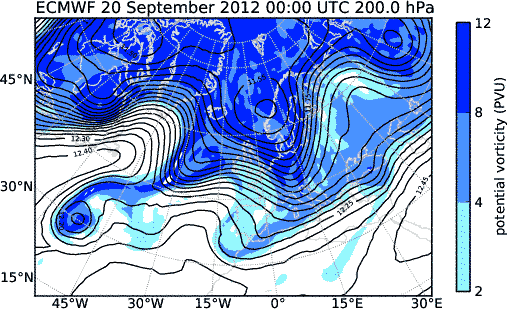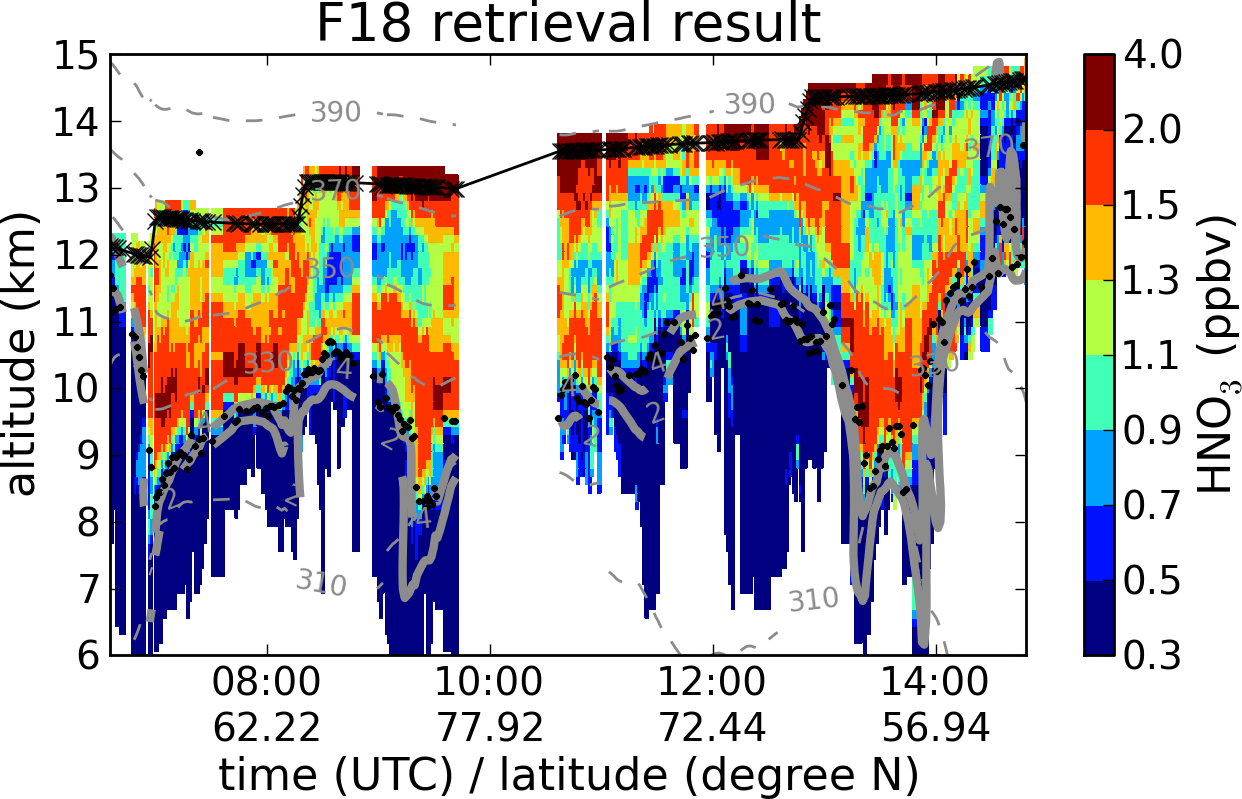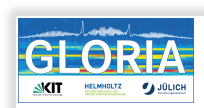The upper troposphere/lower stratosphere (UTLS) is a region that is significantly influenced by stratosphere-troposphere exchange. Changes in the composition of this region have the largest impact on radiative forcing and are major drivers for surface climate change.
The tropopause functions as a barrier for trace gas exchange in the UTLS. Breaking Rossby waves and tropopause folds are two dynamical mechanisms for STE that blur the boundary between troposphere and stratosphere. Airborne limb sounders operated on board research aircraft are one instrument type well suited for examining this region and phenomena as they may retrieve the volume mixing ratios (VMRs) of a wide range of trace gas species with high vertical resolution. This allows the chemical characterization of measured air parcels and their classification as tropospheric, stratospheric or mixed air mass. This puts the data taken by airborne limb sounders such as GLORIA in a unique position to provide a bridge between airborne in situ measurements that are of high accuracy but spatial sparsity on the one hand and current satellite remote sensing measurements that are globally available but of an insufficient resolution to image fine-scale processes on the other hand.
Preliminary retrieval results from measurements taken by GLORIA during the ESMVal campaign show an intricate structure of the UTLS with filaments of predominantly stratospherically and tropospherically influenced air following the breaking of a Rossby wave over Europe in September. The high vertical resolution of the instrument is essential here, as important structures in the UTLS such as the tropopause inversion layer are only a couple of 100m thick. By analyzing the chemical composition of measured air masses, the extent and composition of the extratropical transition layer can then be analysed and exchange processes may be quantified.
 |
 |

